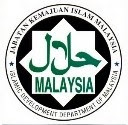GARAM BUKIT TULIN
AJF ENTERPRISE
A-3-1 TAMAN DANAU KOTA JALAN 3/23D OFF JALAN
GENTING KLANG SETAPAK KUALA LUMPUR
TEL : 03- 41425326 / 019-3707520 / 012-3750983
ajf-entp@streamyx.com
The Indus Valley is where the ancient Indian culture and civilization developed and the Salt Range of the Indus Valley is where Indians mined this salt thousands of years ago already. The Salt Range lies between the Indus River and the Himalayan Range in the north of what is Pakistan today. The ancient Indians called the salt mined there Saindhava lavana. That means Indus Valley salt or Indus Salt – the salt (lavana) from Sindh, the land along the Indus River – the Indus Valley.
Ayurveda
The pleasant and invigorating effect of Indus Salt was known in India thousands of years ago already. Indus Salt was used with great success by Ayurveda, the science of a long and healthy life.
Uncontaminated
Indus Salt originated from the salt of the ocean hundreds of millions of years ago. It has been protected from environmental pollution by overlying rock layers to this very day. As we know, today’s oceans are polluted with heavy metals, toxic chemicals, radioactive contaminants and crude oil that has run out from ships, etc.. That is why the salt obtained from the sea is contaminated to a greater or lesser degree, depending on where it is extracted. By contrast, Indus Salt is uncontaminated and pure.
Pure nature
Indus Salt is a pure natural product with no release agents, free-flow agents, bleaching agents or any other additives. Indus Salt was formed in the Cambrium era of geological history 500 million years ago. Other rock layers were deposited on salt from dried-up oceans and have sealed the salt to this very day. The salt has matured deep inside the earth for millions of years and developed into one of the most valuable foods on earth.
Mining
Salt is an amorphous, light rock. When enough heavier rocklayers are deposited on salt and exert pressure on it, it escapes into cracks and cavities and is even pressed up while the heavier rock layers sink. In the process, salt forms mighty vertical salt domes, the upper ends of which reach up almost to the surface of the earth. These enabled human beings to mine the salt thousands of years ago already. Indus Salt is mined, washed by hand and dried in the sun.
The colours
Indus Salt can be red, white and clear. The red coloration is from the natural iron content. Fine pink coloured salt stems from chunks of red salt. The finer the granules, the lighter coloured the salt appears when light is refracted. Fine white salt stems from chunks of white salt. White salt comes from white rock, and pink salt from red rock. Clear granules are obtained from clear, cube-shaped salt crystals.
AJF ENTERPRISE
A-3-1 TAMAN DANAU KOTA JALAN 3/23D OF JALAN GENTINGKLANG SETAPAK KUALA LUMPUR
TEL : 0341425326
(019-3707520)(0123750983) strong>entp@streamyx.com
skip to main |
skip to sidebar

Support the Haiti Disaster Relief Effort
Followers
Blog Archive
AJF ENTERPRISE

- AJF ONLINE
- AJF ENTERPRISE (001912376-v) TAMAN DANAU KOTA JALAN GENTING KLANG 53300 KUALA LUMPUR Tel:01133137206 ajf.online7206@gmail.com
